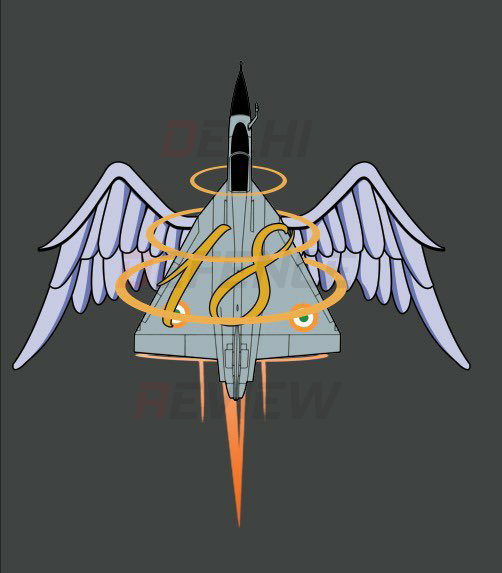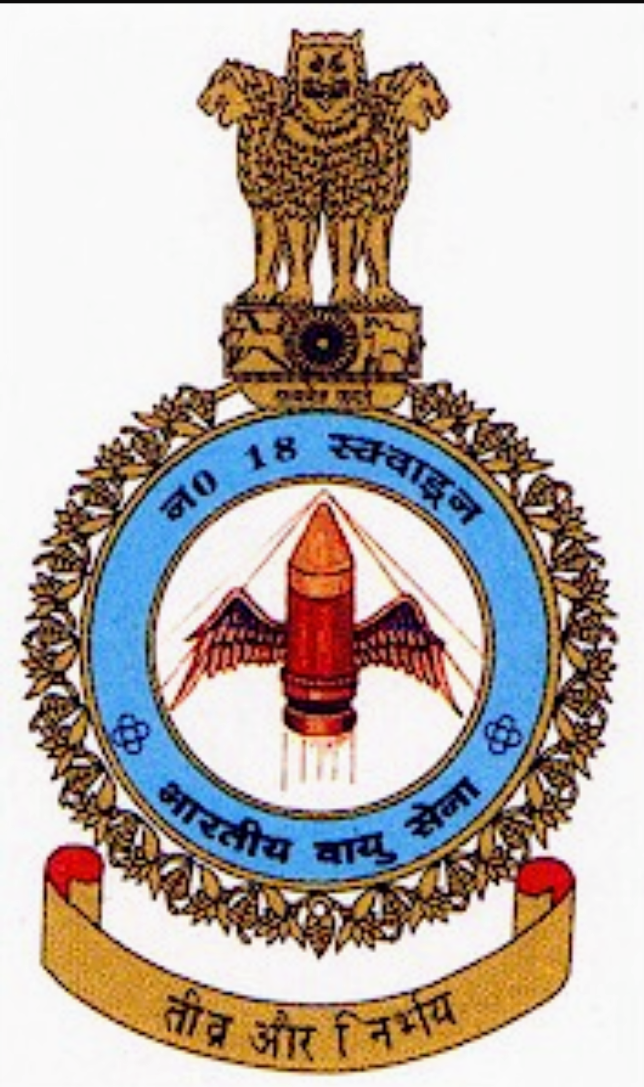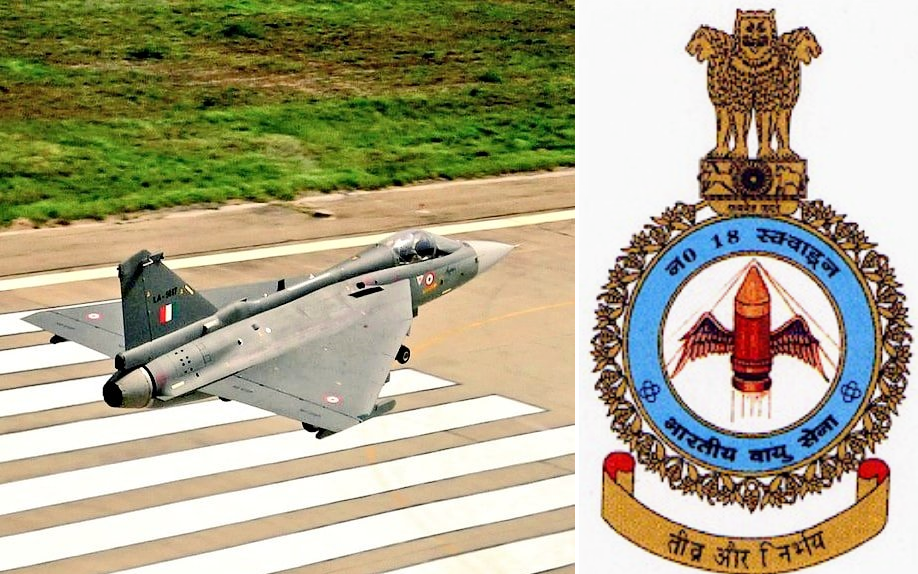
Image: Squadron Patch of the resurrected No.18 Flying Bullets Squadron
On May 27, 2020, the No.18 squadron of the Indian Air Force (IAF) also known as the ‘Flying Bullets’ will be resurrected at Sulur airbase in Tamil Nadu as the service’s second Light Combat Aircraft (LCA) Tejas Squadron. Our readers would remember that Delhi Defence Review had apprised them of the resurrection of the squadron and the scheduled formal induction ceremony on May 24, 2020 itself. The Chief Of Air Staff, IAF, Air Chief Marshal Rakesh Kumar Singh Bhadauria will be at Sulur to grace the occasion. Although, the Flying Bullets was ready for Ressurection in April 2020 itself, the ceremony had to be postponed on account of the ongoing All-India lockdown designed to mitigate the pandemic.
The Flying Bullets will be commanded by Group Captain Manish Tolani, a veteran of the LCA Project and someone who was till recently the Flight Commander of the No.45 ‘Flying Daggers’, which became the IAF’s first operational Tejas squadron back in 2016. The Tejas aircraft being inducted into the Flying Bullets will all be of the Final Operational Clearance (FOC) standard, and four units of the same will be inducted initially, with the rest coming in over the course of the next 12-16 months.

Image: Hal Tejas SP-17 taking flight. SP-17 will be the first aircraft to join the resurrected Flying Bullets.
The Flying Bullets Squadron
Raised on 15 April 1965, months prior to the Indo-Pak War of 1965, it was initially a Folland Gnat Squadron. The squadron, however, stayed out of the war of 1965, and was operationally deployed only during the 1971 Indo-Pak War. But what a fighting debut it turned out to be!
It was during its deployment as an Air Defence squadron for the Kashmir valley that a young squadron pilot, Flying Officer Nirmal Jit Singh Sekhon, etched his name in gold, by taking on a wave of six Pakistan Air Force F-86 Sabre aircraft and shooting down two of them, single-handedly. Unfortunately, Sekhon’s aircraft was also hit during that engagement and he perished in combat. Flying Officer Sekhon was posthomouly awarded India’s highest wartime gallantry award, the Param Vir Chakra (PVC) and the Flying Bullets thereby became a PVC Squadron, the only one in the entire IAF.
Subsequently, from 1975-89, the squadron operated the Hindustan Aeronautics Limited (HAL) developed Ajeet, which was a successor to the Gnat. After the phase out of the Gnat and the Ajeet, the squadron changed its role from an Air Defence squadron to one focused on Ground Attack and Close Air Support by switching to the Russian made MiG-27 ML, which was called ‘Bahadur’ in IAF service. The Squadron began operating the MiG-27 ML in 1989 and was number-plated only in 2016 with its aircraft being phased out of service that year.

Number plating a Squadron
Upon the end of the service life of the aircraft or equipment with an operational IAF squadron, its personnel are typically rotated to other units, unless and until new equipment is made available, and the unit is said to have been ‘number-plated’ i.e. taken off the active roster.
Resurrection of a squadron
When a number-plated unit is identified for re-operationalization, adequate and trained personnel are placed with the unit, and on paper, the unit is resurrected. The Flying Bullets will be resurrected as part of this tradition when it officially receives the FOC-configured LCA Tejas aircraft. So, on Wednesday, May 27, 2020, the IAF will formally induct the HAL Tejas into the Flying Bullets Squadron and the squadron will be declared fit for operations. Incidentally, the day will commemorate the 21st anniversary of the commencement of Operation Safed Sagar, the Air Campaign component of the 1999 Indo-Pak Conflict also known as the Kargil War.
With inputs from Adreesh Ghoshal
© Delhi Defence Review. Reproducing this content in full without permission is prohibited.
































